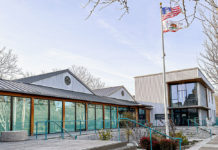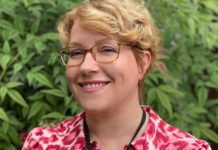District learning challenges continue, but county cases don’t support in-person instruction
At the Oct. 6 meeting of the Windsor Unified School District Board of Trustees, district staff provided some fairly grim information regarding returning to in-person school in the wake of the county’s COVID-19 numbers. While distance learning is going reasonably well, it is proving to be a nearly crushing workload for staff and a significant challenge for students.
Attendance
The first part of the discussion dealt with attendance and participation distance learning and was given by Allison Griggs. Attendance during distance learning is tracked in AERIES, but due to state requirements, the task is pretty onerous.
The challenge starts with the fact that rather than strict attendance, teachers must mark students as being “distance learning engaged” or “distance learning not engaged.”
Should a student miss an “engaged” they have an option to improve that by completing an asynchronous (independent) task. Engagement must be updated weekly by teachers, and assignments and engagement collated per student.
“A student has the opportunity to use independent lessons to make up for missed classes, and that does directly affect our rates of attendance,” Griggs said. “I do want to mention this is a heavy lift for our teachers, it’s pretty intense for them to be tracking all this information, not only synchronous but also going in weekly to put in asynchronous work when kids do it later. It is a lot to ask and more than we’ve ever asked them to do. They are working extra hard to track attendance.”
The overall district average from Sept. 14 to Oct. 2 was 95.9%. Site averages for the same period were: Mattie Washburn (98.6%), Brooks Elementary (97.8%), Windsor Middle School (98.9%), Windsor High School (91.7%), Cali Calmecac Language Academy (98.5%), North Bay Met Academy (96.4%), Windsor Oaks Academy (96.1%) and the North County Consortium (92.1%).
Trustee Bill Adams asked if there was any way to lighten to the load for teachers, but Griggs stated that the engagement tracking is required by the state.
“Imagine trying to keep track of every meeting, email and completed task, and you have 150 people to keep track of. It’s really overwhelming,” said Pete Stefanisko, a teacher at WHS and head of the teacher’s union for Windsor. “It’s like the legislators that created it had never attended school. We know when we’re making contact with students, but this seems to be collecting data for the purpose of collecting data, not improving instruction.”
“It is absolutely collecting data for the purpose of collecting data,” said Superintendent Jeremy Decker with a laugh. “Good analysis.”
Student survey
The district also performed a student survey to determine what the students’ perspective on the relative success of distance learning is, and Director of Curriculum and Instruction Lisa Saxon presented a selection of information gleaned from the survey. Most of the respondents were high school students, with an overall response rate of 32% which she characterized as reasonable given “survey fatigue.”
The survey revealed that the type of feedback preferred overwhelmingly by students is written feedback via Google Docs or email. Students also stated their strong preference for discussions via Zoom for interaction with peers and classmates, though Saxon admitted that teachers don’t agree with this, as they feel students aren’t inclined to speak much over Zoom.
A question about teacher flexibility in terms of assignment, attendance and grading showed that 53% of respondents believe that teachers are somewhat flexible and 35% think they are very flexible. However, vice president Stephanie Ahmad expressed “serious concern” over the reaming 11% that feel their teachers are not flexible.
That concern continued when Saxon reported some concerning stats about connection and family challenges. “Sixty percent don’t feel connected to classmates and 40% are struggling to focus,” she said. “Thirty-one percent said they didn’t feel like school understood their family challenges. That is good feedback for us to make more connections and ask more questions. We’re hearing stories about kids showing up to synchronous learning with younger siblings on their hip or (bosses who want them to work more hours) and they feel the need to help their families financially. We need to figure out these obstacles and how to remove them for our students.”
According to Saxon, “Seventy-two percent of students are saying they are spending more time on schoolwork than under normal circumstances, but in some ways that does not add up to what teachers are reporting with how they gutted their curriculum to get in the key points.”
Still, the survey showed that 74% of respondents feel the experience of distance learning is “neutral” or “positive.” When asked what they want to do when campuses re-open, 75% want to come back and 25% want to stay on distance learning.
“We need more continued dialogue as we work together to troubleshoot and narrow in on our ‘goldilocks syndrome,’ what is ‘just right’ to keep kids engaged, learning and moving forward,” Saxon said.
What the future holds
Decker provided a snapshot of the current status of the county and its designation as being in the purple tier, Tier 1, which prevents schools from having any kind of in-person learning. He expressed sympathy for parents that feel frustrated because other Bay Area counties are further along in the tier system and in returning to some part of in-person learning.
Recent trends do not appear to be moving in a favorable direction. “Last time we talked about feeling good that we were trending towards getting out of Tier 1, and then our numbers started rising,” Decker said. “We’re trending in the wrong direction right now.”
Among the things Decker has been working on is an MOU with WDEA about a possible return to school which he classified as a “phased approach for coming back to school,” and they are discussing the metrics of what a safe return would look like.
A huge issue for school districts is the new requirements from the state that they will have to take over contact tracing for any infections within the school community.
“Our nurses have been trained, but that doesn’t mean we know how feasible it would be,” Decker said. “It’s a heavy lift and we’re trying to figure out if possible, and honestly I don’t know if it is possible”
School districts are also now responsible, both financially and administratively, for testing of all employees. The current health plan provides free testing every two months, but that won’t meet the frequency requirements set by the health department.
“That doesn’t make me feel warm and fuzzy,” Decker said. “‘Don’t worry, I was tested 54 days ago,’ and anything beyond that would come from district coffers.”
There is a test available from Quest diagnostics that garners results in two days, according to Decker, but it would cost the district $115 per test, which trustee Bill Adams quantified at $50,000 a month to cover all district employees.
Decker stated that there are ongoing conversations throughout the county with all secondary school superintendents because of the struggles with distance learning.
“We are seeing that everybody is working so hard and not getting the results we want, and in terms of learning and outcomes for students,” Decker said. “We need to solve it but we’re not sure how, and it feel it’s an emergency because distance learning is looking like the mode for foreseeable future, especially with the trends in Sonoma County.
“We need our students to be more successful,” he continued. “We’re seeing grades become more of an issue than in years past. Having said all of this … it’s not looking good (for returning to school) is what I would say to you. We can continue to assess all these different areas, but at some point we need to tell families what our intent is for the rest of the semester. At this point, the earliest we could (return) is Nov. 6, and then it’s only one month till winter break. So, I’m heading towards staying on distance learning through winter break.”
Decker also brought up that re-opening plans for middle and high schools have nearly impossible to figure out, since their schedules include different classes, classmates and teachers throughout the day.
“It’s proving really difficult to solve,” he said.
The board had received a letter from a parent asking they reopen schools, but they reiterated while the county is in the purple tier it is out of their hands. However, they also clearly felt that the safety of staff and students should come first.
“I know this is extraordinarily difficult, but to me it is about safety and not just the students,” said Adams.
“I couldn’t live with opening schools and someone died,” said Trustee George Valenzuela. “I don’t want to live with. We’re not in the clear and due to safety, we’re worried about kids and employees. I know it’s not popular, no one likes it distance learning, but that’s where we are.”
“(We need to give) clarity on what to expect for the end of the calendar year and re-evaluate as we get closer if we’re ready to open, and on what model,” said president Eric Heitz.
A vote on school plans has been added as an action item for Oct. 20, and any new information will be provided at that time.
“However, based on what I’m hearing I will recommend continuing distance learning through, at minimum, winter break,” Decker said. “I don’t anticipate numbers changing drastically enough to change that.”








